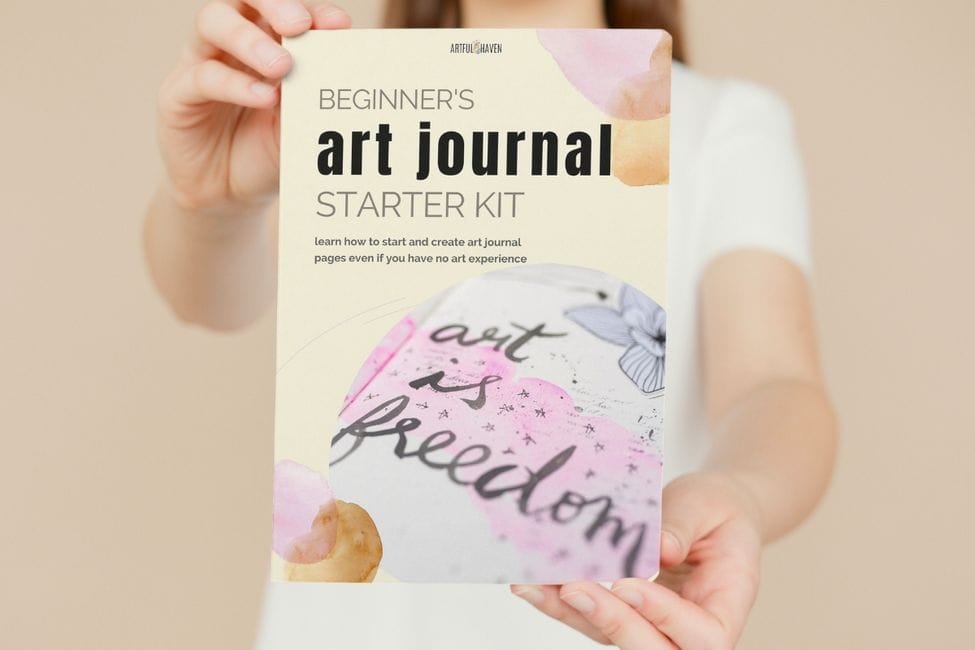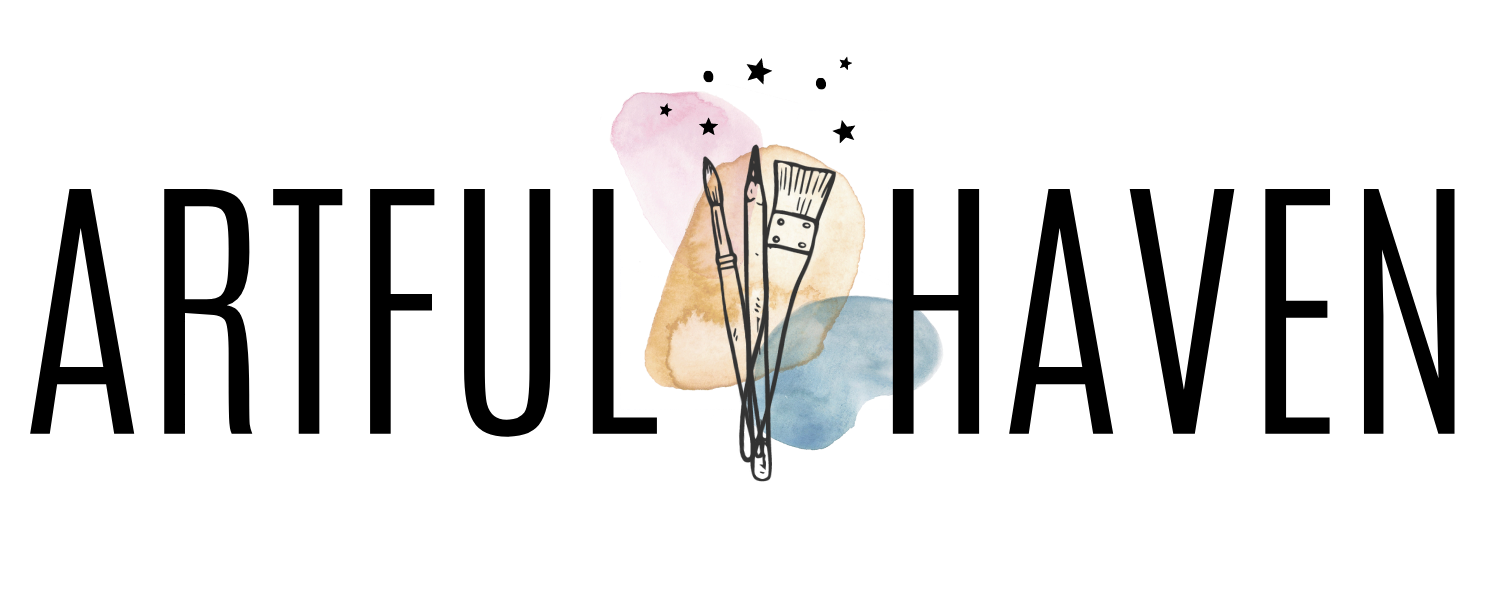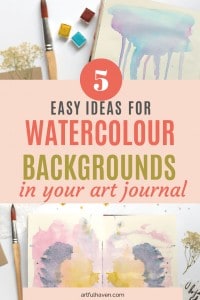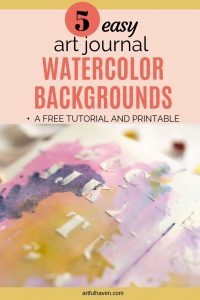Watercolor Background Techniques For Art Journaling: 5 Easy Ideas For Beginners
So many artists are in love with watercolors! Well, it’s no wonder. They are perfect!
Why? Because watercolors are dreamy, light, and airy. At least that’s how I see them. I use them a lot and experiment with them.
They are also great for creating art journal backgrounds. You can then write over them, with pens or markers, you can draw, doodle, or whatever you want. Also, they won’t clog your pens like acrylics might do.
Do you need to be an expert on watercolors to use them?
Absolutely not.
Using watercolors doesn’t have to be hard
Today, I want to share a few simple and easy watercolor background techniques for your art journal.
I wasted a lot of time avoiding using watercolors in the beginning because they were intimidating.
Have you seen how well some people use watercolor and wanted to cry? Ooooh, those people make such art that you want to tear every page you ever created, shred them to pieces, and make a bonfire out of them.
But, don’t light any fires yet, please. Just read on and see how you can use watercolors in simple ways and still get beautiful results. The key is to experiment and enjoy.
The supplies I used for these watercolor backgrounds
Some of the supplies are from the store but a few of them are just something you can find in your own home.
- An art journal with watercolor paper (you can try any thicker paper you’ve got, but once you try watercolor paper, you won’t go back.) If you don’t have a journal, pick a sheet of a separate paper, just to experiment for now.
- Watercolors
- A round paintbrush. I use a larger size for this purpose because you have a bigger surface to cover when doing a background.
- Paper towel
- Kitchen sponge
- A stencil
Art journal watercolor background techniques
1. Dripping
For this technique, you’re gonna need a lot of water. Well, I don’t mean like a full glass so you can drown your journal. Nooo. Just a bit more than you would usually use. (That’s why this works best on watercolor paper because this paper doesn’t absorb water like plain paper.)
First, put some water on top of your page. Then, let it drop down the paper freely. You can put a paper towel at the bottom to pick up the excess water.
Next, pick some watercolor with your brush and go over the top of the page again. Do you see how the color follows the water down? Watercolor will not go where it’s dry, so you have control over where the drops will continue.
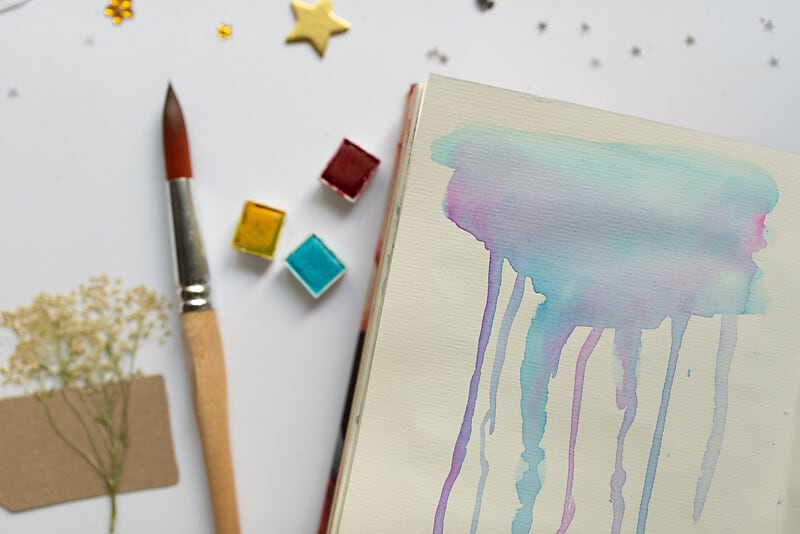
If I want the dropping line to be longer, I use my brush and just pull it down with more water.
Also, you can mix colors and create a gradient.
Once you’re satisfied with how it looks, you can leave it to dry or take a paper towel and take off the excess by dabbing gently. As a result, you create a more washed-out look.
2. Dripping on gesso texture
Is it any different from the previous technique? Not really, but it creates a different look.
How? Well, with Gesso, you can create a textured background. Just put some on the paper, move it around with your brush, or a toothpick, whatever will make a mark on the wet gesso.
So, when you drip watercolor on this kind of background, it flows differently. The water goes down faster because the gesso makes the surface smoother.
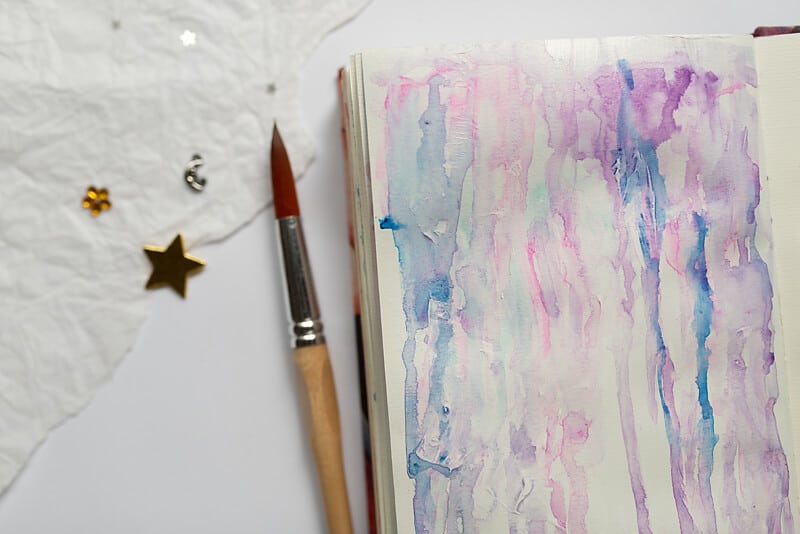
And yet, some of this gesso texture keeps the water from going further. The result is a fabulous background!
You can also move your page around so that the water can flow up and down. It’s such a fun play.
3. Use a stencil
I used to play with stencils and acrylics only, thinking watercolors would only bleed through a stencil. Well, this Jon Snow knew nothing!
This is because the combination of watercolor and stencil makes a great effect. It’s all smudgy and uneven, and that’s what makes it interesting. This is a great way of letting go of the perfect and embracing the beauty in a mess.
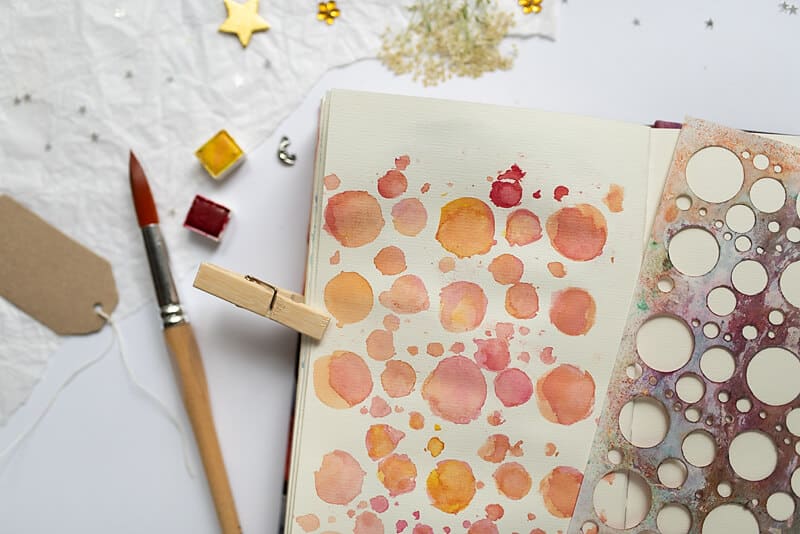
So, this is a simple technique of creating a background with watercolors. Just put a stencil on the paper and paint with watercolor. Also, don’t be stingy on water and paint here. The more water, the more mess! Paint loosely and enjoy the process.
After this is dry, I love to put gesso over it to get a washed-out look. And if the watercolor underneath smudges a bit, it’s a cherry on top!
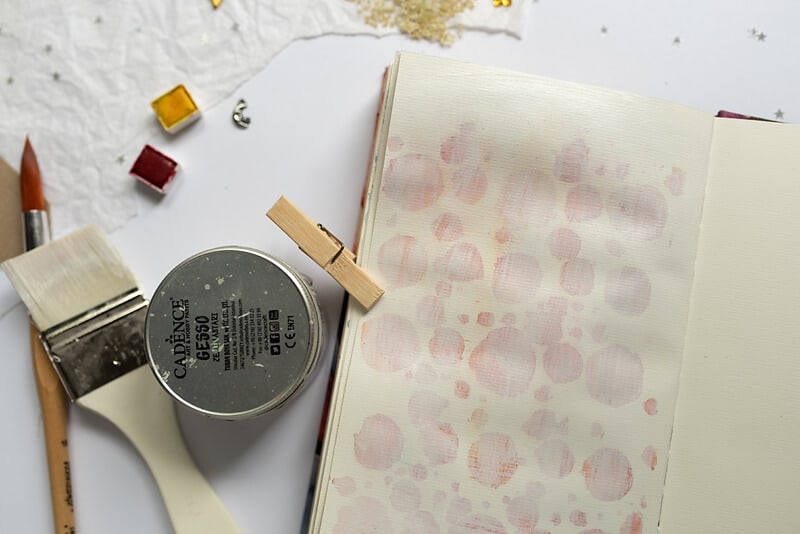
4. Dabbing watercolor with a sponge
I’ve tried this one quite recently. For this technique, I use a small piece of a kitchen sponge.
First, I make a blob of watercolor on a plate/palette.
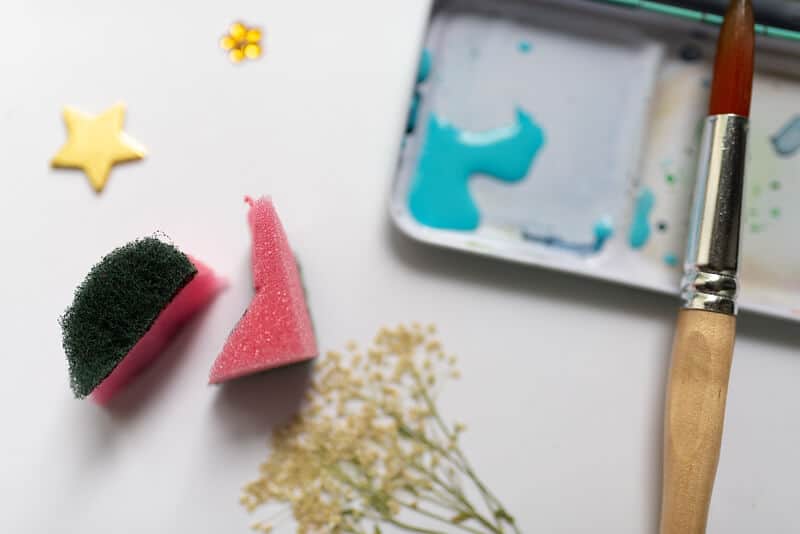
Next, you take the sponge and dip it into the water. After that, dab the sponge onto the paper. Then, create another blob of different colors and dab while both colors are still wet.
If you feel it’s too dark, just wipe off the excess water and paint with a paper towel. Then the color will be lighter.
To make it more interesting, I also cut a moon shape from a sponge.
I dipped it into the watercolor and stamped it on the paper. I loved the effect! Look:
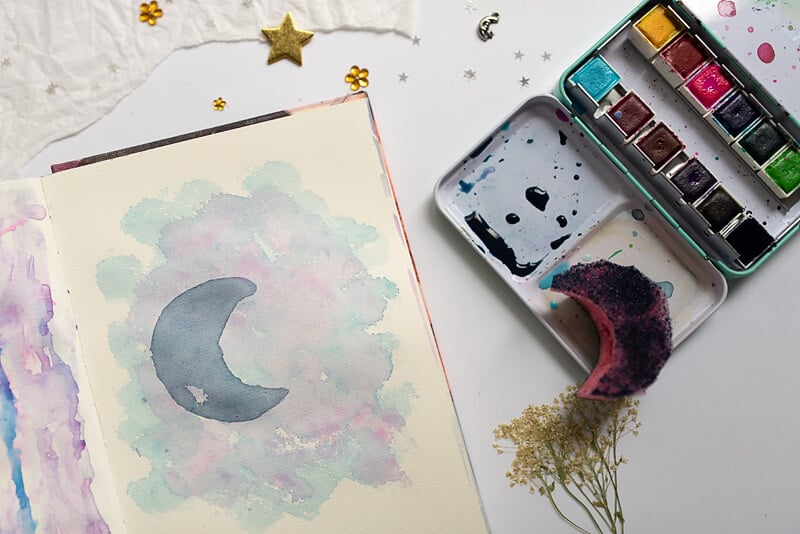
5. Kiss and divorce (spoiler: this can get messy)
And make more mess! This is a simple one, it’s done in a minute. But the result is stunning.
First, open your journal with a blank spread. Paint one page with watercolor, either one color or more. Cover the whole page or just some parts. Just experiment!
Then, while the paint is still very wet, close your journal so that the blank page presses the painted one. Keep it like this for just a few seconds and then divorce them!
Repeat if you want to have layers of color.
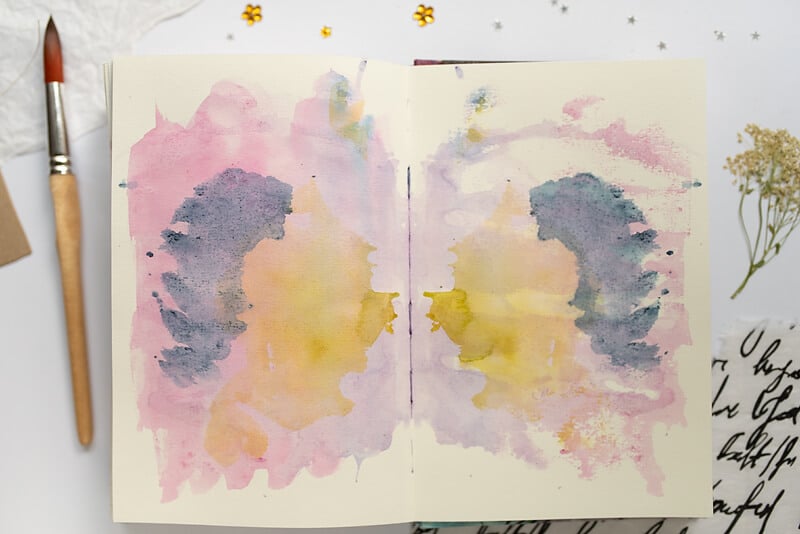
Wow! I get surprised every time at how this looks. And with every new spread, you get a different result.
So, if you’re clueless and have no ideas where to start, just go with this one.
Do you like these watercolor background techniques?
I know you do. That’s why you shouldn’t think watercolors are just for artists. You know, the artists that the world recognizes as such, with titles and studios and all that jazz.
You’ve seen through these short tips that you can create interesting watercolor backgrounds in your art journal in a matter of minutes.
That’s why I wanted to share these simple tips, so you can see how easy this can be.
Art journaling is all about the process. So, you should enjoy the process and not be stressed over the result.
CREATE WONDERFUL ART JOURNAL PAGES
EVEN IF YOU’RE A BEGINNER
Get your free Art Journal Starter Kit and start creating easily and with inspiration. Forget about blank page fear and art blocks.
